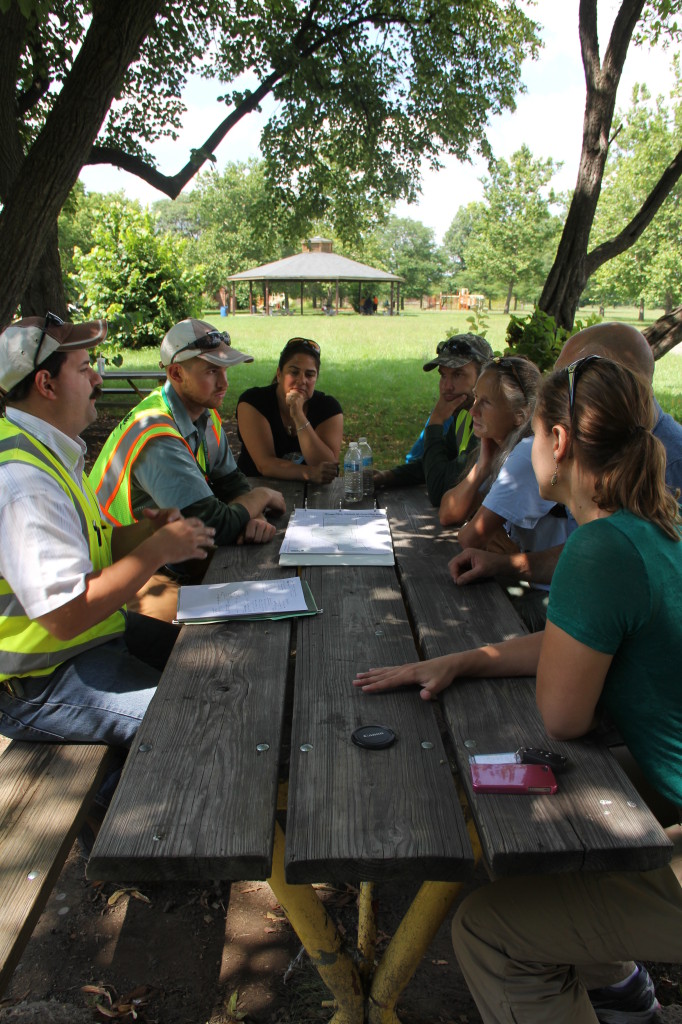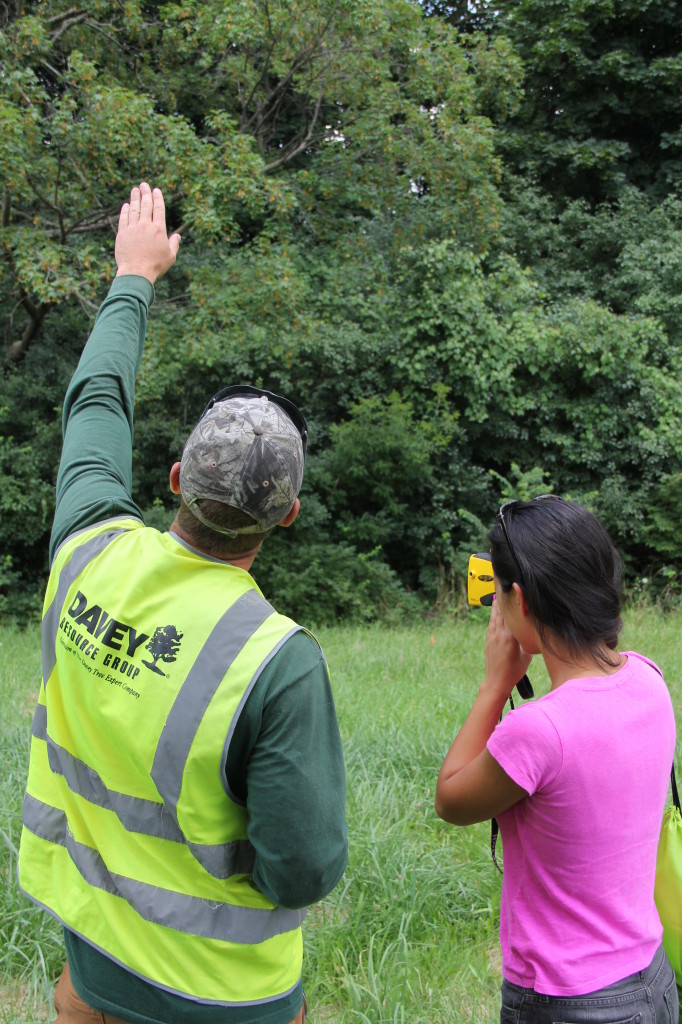
Last week, Melinda Housholder and I, aka American Forests’ urban forest team, traveled to Detroit, Mich., the site of one of the Community ReLeaf 2013 projects. We had the opportunity to meet a lot of folks working on greening initiatives in Detroit and saw a lot of the city. It was a very interesting time to visit the city, being in the midst of its bankruptcy.
A few neighborhoods we drove past were well-maintained with beautifully landscaped traffic islands, but the majority of what we saw was abandoned houses and buildings with boarded-up windows. Many of the abandoned neighborhoods were only a short distance from Rouge Park, our Community ReLeaf site.
Detroit was a booming industrial city for the first half of the 20th century, with the founding of the Ford Motor Company in 1903. Rapid population growth made Detroit the fourth largest city in the U.S. with 1.8 million people in 1950. However, the city has recently seen a rapid economic and population decline. In 2010, Detroit’s population was at 700,000.
The city has also experienced environmental decline. Rouge Park is the only remaining forested area in Detroit. It’s home to the Rouge River, a variety of wildlife and native prairieland.

In order to better understand the urban forest assessment being conducted in Rouge Park as part of Community ReLeaf, we met with our Davey Resource Group team on the western border of the park. The guys gave a rundown of their data collection plan and walked us through the work they do. There are several measurements to take in each randomly selected 1/10 acre plot and for each individual tree. For the plots, they estimate tree canopy cover by looking at the open spaces, where we could see sky through the trees; ground cover; and shrubs. For each tree, they measure diameter at breast height (DBH), canopy cover, tree height, percent gaps in crown cover and several other specifics to get a detailed picture of each plot. It was interesting to see real data being collected that would be put into the assessment.
We also met with The Greening of Detroit and Friends of the Rouge to talk about the initiatives that are going on in the park and city overall. One of the interesting initiatives is The Greening of Detroit’s Green Corps program, which helps both the environment and youth in the city. Green Corps is a youth employment program designed for high school students living in the city. Teens travel around the city to maintain more than 100 The Greening of Detroit planting sites. Through this program, corps members learn urban forestry skills, sustainability skills and financial literacy skills that will help build their resumes. Friends of the Rouge also talked about several activities that go on in the park and how it’s an important environmental and social piece of the city. With an Olympic-sized pool, amphitheater, mountain bike trails and butterfly tours, Rouge Park certainly has a lot to offer a city looking to turn things around, and we’re excited to be working with the Davey Resource Group and local partners to help assess and restore Rouge Park for the citizens of Detroit.